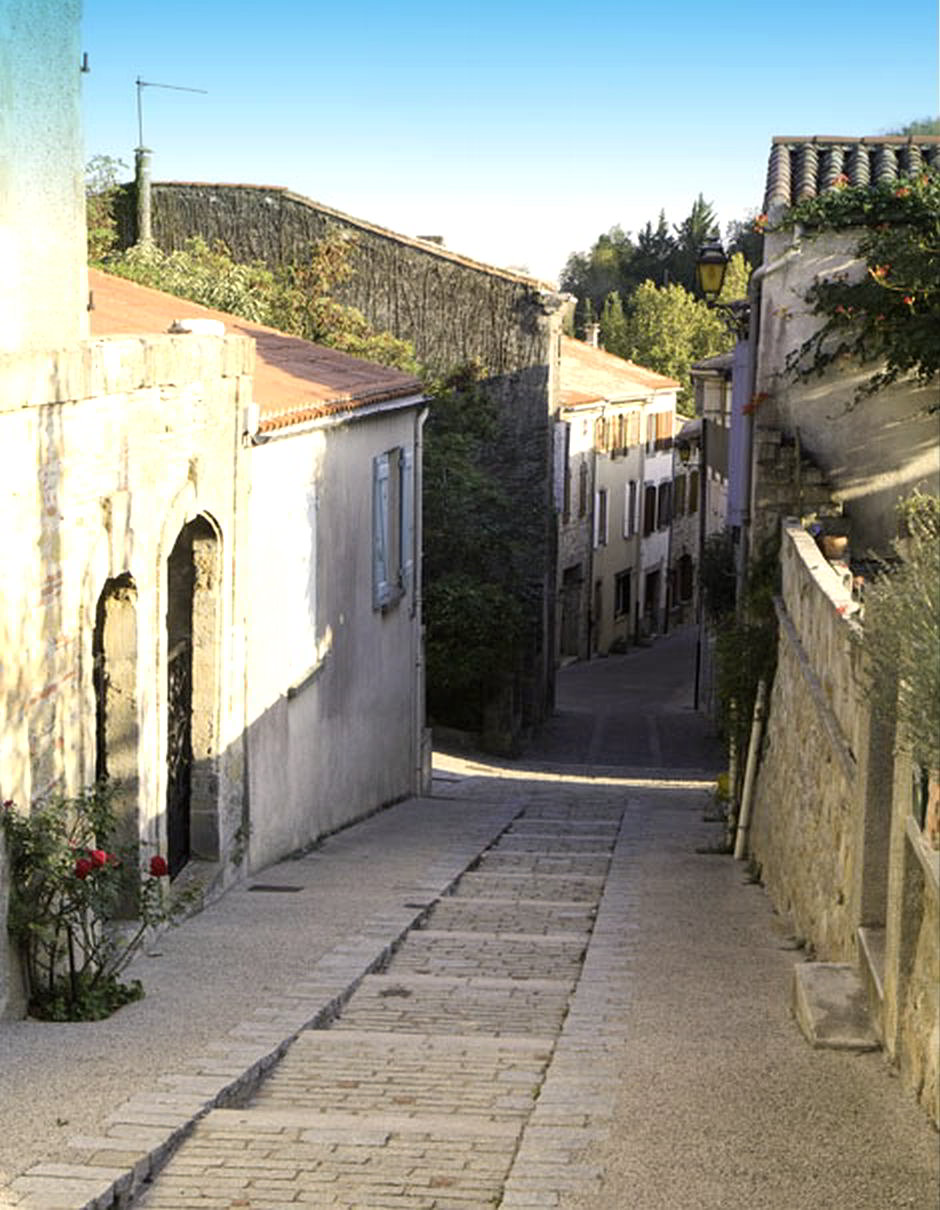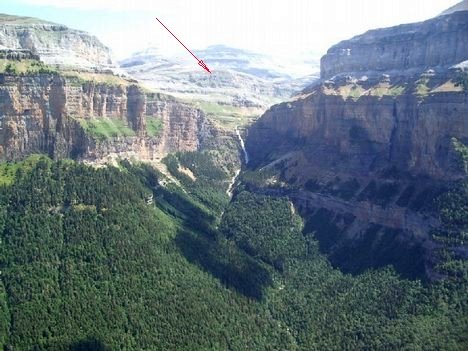
We'd rented a charming, medieval house just yards up the one steep cobbled street leading up from the village square to the old market place close to the top of the hill on which the village sprawled, surrounded by isolate monasteries and vineyards. We'd driven from England to meet two friends, from Belgium and the Netherlands, whom we'd met over the pervious Christmas holiday on a horse riding break in Dorset, near the quaint village of Dunster.
 Jan and Ehrlich had happily agreed to spend a week at the house in the late
summer before we all went on for a week long trek across the Pyrenees. The
elderly, gnarled French woman, who was expecting us on behalf of the English
owner of the house, met us on our arrival and retrieved the door key from
behind a loose brick of the mortar-faced house that was to be our superbly
comfortable home for the week.
Jan and Ehrlich had happily agreed to spend a week at the house in the late
summer before we all went on for a week long trek across the Pyrenees. The
elderly, gnarled French woman, who was expecting us on behalf of the English
owner of the house, met us on our arrival and retrieved the door key from
behind a loose brick of the mortar-faced house that was to be our superbly
comfortable home for the week.
We'd traversed the area, visited mountain chateaux, fabled towns and villages and got to more places in one week than I'd have thought possible in a month, including the hiring of some bicycles and riding for some 100km along part of the mountain route taken by the Tour de France. There was a 10 kilometre downhill run that was superb, but the climb was exhausting. Jan and Ehrlich, who were also skilled rock mountaineers, seemed to just take it in their stride and were always around the uphill bend in front of us waiting, before riding on as we caught up again.
As we drove away from Fanjeaux bound for the Pyrenees, I carried a myriad jumbled images of our stay at the village - days of 120 degrees, cold beers in the single bar in the square, giggling long haired and brown skinned girls, lizards lazing on the sun drenched curved roof tiles, a chemist that only opened twice a week, toads the size of saucers that came out only at night to flatten themselves on the cool stone streets – and the view from the cobbled observation platform at the top of the village to the distant imposing expanse of the Pyrenees.
The decision to head for the Pyrenees was not really made until close to the end of the week. We'd intended heading for mountains, and the choices were the French or Swiss Alps or the Pyrenees and we had maps for all. We were the enemies of the common people but they didn't know it. We chose the Pyrenees and mapped out a route around the Pic d'Midi, intending to walk a little into Spain. We'd located a secure camp site base in the driveable region of the mountains, where we could safely leave our cars for several days.
There was a fee to leave our vehicles and we settled the bill before setting the tents up for the night, ready to leave the next day. The site was located along a steep sided upward sloping hanging valley. We were right at the end, which then plunged away several thousands of feet to the floor of another enclosed valley beyond, hemmed in by steep mountain slopes topped with sheer rock buttresses rising several hundreds of feet from the crowns of the slopes. Vultures perched along the ridge, gawking into the depths of the valley and eagles soared high above.
 The site was quite full and we chose spots close to the hanging edge, though
Jan and Ehrlich chose a slightly more sheltered spot than the one I picked.
I had a good, sturdy tent that had withstood hurricane force wind and battened
it securely down, the sloping rear facing the hanging edge. A wind was picking
up from the valley below, but I've always been one to pitch in the more exacting
spots.
The site was quite full and we chose spots close to the hanging edge, though
Jan and Ehrlich chose a slightly more sheltered spot than the one I picked.
I had a good, sturdy tent that had withstood hurricane force wind and battened
it securely down, the sloping rear facing the hanging edge. A wind was picking
up from the valley below, but I've always been one to pitch in the more exacting
spots.
After setting up the tents, we drove off and found a mountain restaurant for dinner, our last proper meal for several days. We'd be living off packed rations only when in the mountains.
It was midnight when we got back to the tents so we lit a fire and cracked some beers before turning in. It was pleasantly warm, but we would be heading up into glacial regions on route. I took a look down the darkened but moonlit valley floor far below the back of our tent before turning in with my partner and dousing the light.
It's difficult to remember now just what it was that woke me, but I woke with a sense of foreboding. It was too still – just too still. I'd known that feeling once before in Hove in east Sussex, moments before a huge waterspout that had come ashore from the ocean a mile away cut a path through our housing estate, somehow missing all the buildings but sucking curtains out of open windows and snapping the air momentarily out of the room and our lungs as it passed. The waterspout missed all residential buildings but ripped a barn to shreds on the top of the South Downs some miles away before eventually dissipating. Some say that waterspouts and tornadoes have a conscience, but I wonder if they are conscious of it.
Then I heard the noise as my partner stirred beside me and awoke to ask what was wrong.
"Listen," I said.
A low distant rumble was coming from somewhere far away down the deep valley behind us as we lay and gazed at the roof of the tent. It was uncanny, eerie, and it took some time for me to realise the sound was wind heading towards us from the valley below, accelerating into the valley's closed funnel before hitting the steep slope to rush up towards our tents just over the hanging edge. And then with a huge blast it hit.
I was glad I'd taken care in securing the tent. It shuddered, rocked, sagged heavilly and ballooned to a taught quiver but it stayed put, like a dog straining at the leash. And the wind stayed blowing hard, gusting at up to I guessed as much as 150mph. I know wind. I began to realise why the campsite's single building had reinforced angled steel beams battening it to the ground.
I fought the tent open to peer out at chaos outside. People were trying to run after disappearing tents, I could see a camper van blown on its side but nowhere could I see a tent still properly standing. I dragged on some shorts and took a torch, followed by my partner Linda. Jan and Ehrlich joined us, their tent too was withstanding the onslaught. In front of us a huge square chateaux of a tent erected by two girls as we'd arrived now looked a complete mess and we could see several guys inside who'd gone to the girls' aid and were trying to hold it in place. It was a losing battle and the tent collapsed in an untidy heap.
There wasn't really much to do. The wind continued gusting for about 15 minutes, before dropping to a squall. People were gathering their things together and some were driving away into the night. By morning, two-thirds of the site's occupants had left. We rekindled the fire and drank some more beer and vowed to set off a little later in the day before turning in again. I was glad I had picked my tent carefully.
Jan told us we were lucky, the wind was a known and regular but still rare phenomenon, she said, and we were lucky to have been there for it. And you know what — I agreed with her.
I was glad they were with us. A few days later up in the mountain's reaches I almost trod barefoot on a snake after leaving my tent for a pee. Erhlich later told me from my description that it was one of the most poisonous snakes in Europe. We had no antidote.
And just what is the name of the small creatures cross between dog, cat, gopher and fox that are unique to the Pyrenees and live in burrows and caves and make a sound something like an eagle?
If you know, please remind me of their name.
NOTE:
Any reader also recognising the location of the base camp is asked to contact the editor.
There is a track leading from the camp that crosses the road passing the
site entrance and there is a small walled lake/reservoir and a few
buildings, which
include a cafeteria and ice cream stalls and children's donkey rides, before
the paths wind away up into the mountains.
... next - On Offa's Dyke Walk
While making the 90 mile Offa's Dyke Walk from Chepstow in south Wales to
Prestatyn in north Wales a remarkable find is made in a deserted farm close
to the route.
The earth trench barrier of Offa's Dyke was supposedly constructed by Offa
(A.D. 757–96) as a defensive
boundary line between the English settlers and the dispossessed Welsh of Gwynedd,
Powys and Gwent. It makes a spectacular cross-country walk.